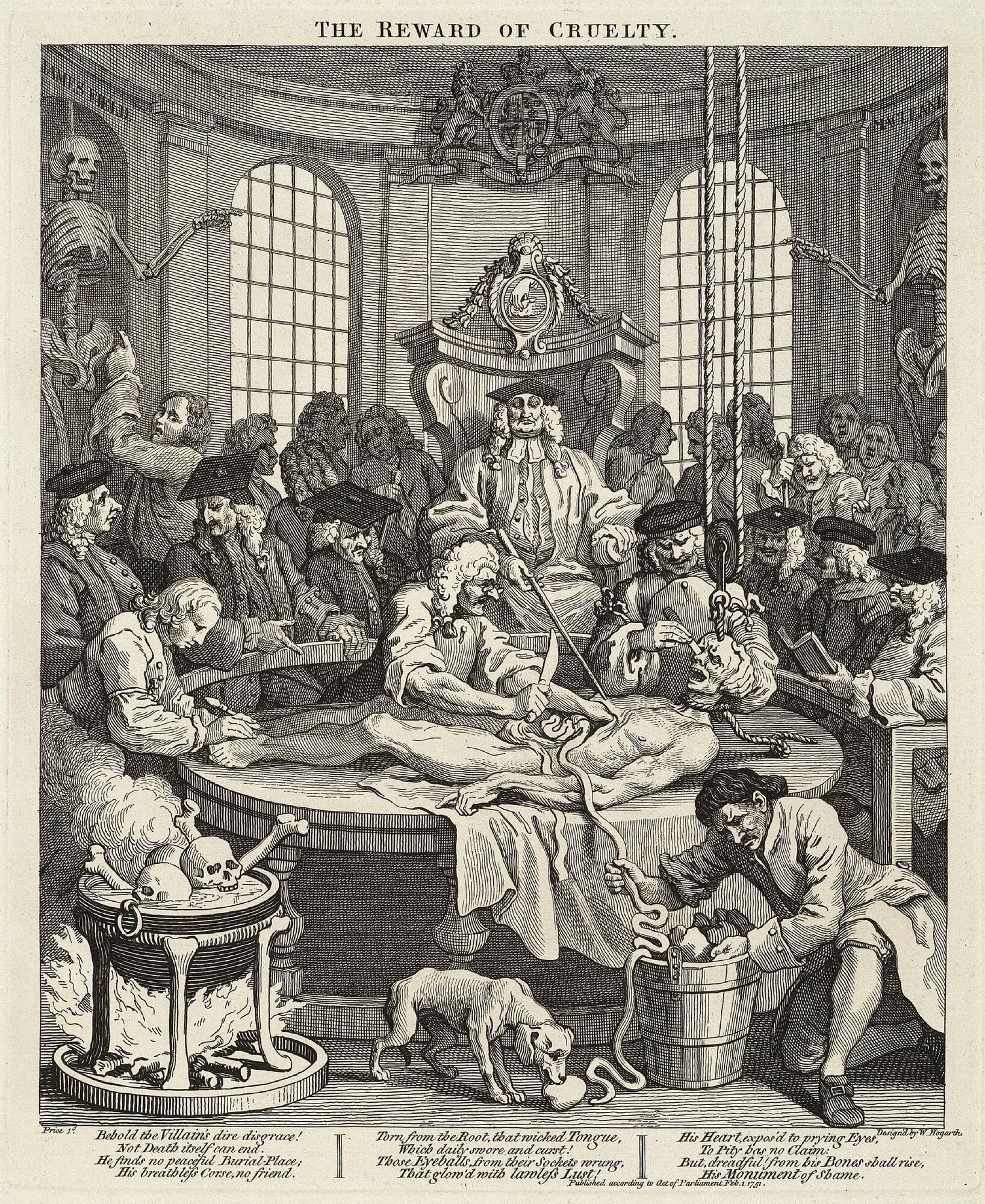William Hogarth
(British, 1697–1764)
The Reward of Cruelty, from The Four Stages of Cruelty

Object Details
Artist
William Hogarth
Date
1751
Medium
Etching and engraving on heavy laid paper
Dimensions
Image: 15 1/8 x 12 1/2 inches (38.4 x 31.8 cm)
Sheet: 21 7/8 x 17 5/8 inches (55.6 x 44.7 cm)
Credit Line
Acquired through the Membership Purchase Fund
Object
Number
76.103.070
Though dissection of the human body was seen as unchristian, the Catholic church declared that the c(…)
Though dissection of the human body was seen as unchristian, the Catholic church declared that the corpses of criminals executed through capital punishment (and denied religious rites) could be used for medical purposes. Satirist William Hogarth used this well-known rule as a fitting end to his print series, The Four Stages of Cruelty detailing the life of a criminal. Hogarth shows the protagonist’s body being used for a public dissection; the viewer can deduce that the ends have justified the means, and the criminal has been stripped of burial rites. Though Hogarth’s scene has been exaggerated in the name of humor, The Reward of Cruelty offers the viewer a glimpse into an eighteenth-century dissection theatre, where behatted medical students can learn the intricacies of anatomy using traditional techniques. (“Undressed: The Nude in Context, 1500-1750,” text by Brittany R. R. Rubin and presented at the Johnson Museum February 9-June 16, 2019)












